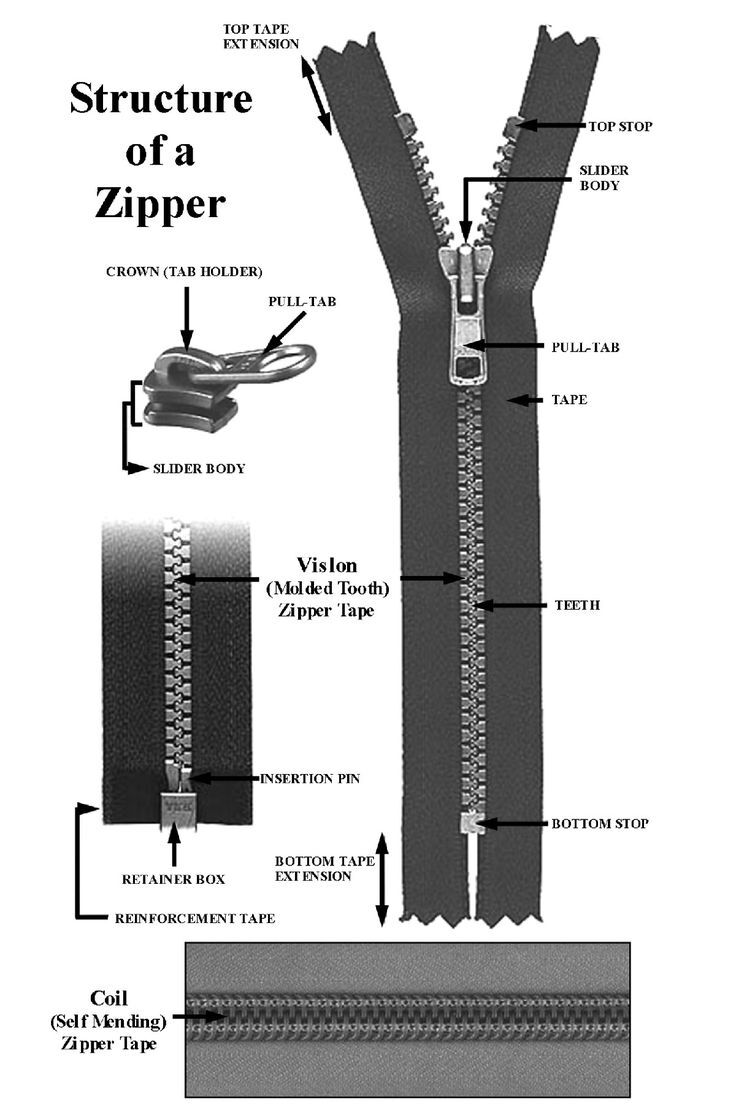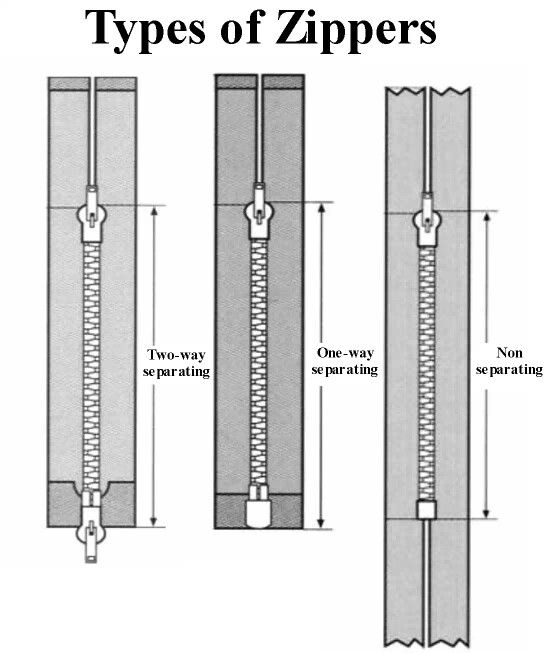Zipper Structure
1. Two-way Separating Zippers
These zippers can be opened from both the top and the bottom, making them versatile for garments like jackets and coats.
2. One-way Separating Zippers
These zippers separate completely at the bottom, allowing the two sides of the zipper to come apart entirely.
3. Non-separating Zippers
These zippers do not separate at the bottom, staying joined when the zipper is fully opened.
Top Stop
A zipper's top stop secures the slider, preventing detachment when fully closed, ensuring stability.
Slider Head
The slider head moves along the chain, interlocking teeth, enabling the zipper to open and close.
Pull Tab
The pull tab, attached to the slider head, allows easy grip and comes in customizable designs.
Chain (Teeth/Coil)
The zipper's chain interlocks securely, made of metal, plastic, or nylon, forming its main structure.
Zipper Tape
The zipper tape, sewn into the item, surrounds the chain, forming the fabric portion of the zipper.
Bottom Stop
The bottom stop on zippers prevents slider detachment when fully opened for zipper integrity.
Insertion Pin
Insertion pin on separating zippers enables complete separation for functionality.
Retainer Box
Retainer box secures insertion pin for alignment and secure closure.

1. Anatomy of a Zipper: Key Components and Their Functions
Zipper parts: slider body, pull-tab, teeth, tape, top/bottom stops. Slider interlocks teeth, pull-tab aids movement.
2. Types of Zipper Teeth: Metal, Molded Plastic, and Coil
Zippers categorized by teeth material: metal for durability, plastic for lightweight, corrosion-resistant outdoor gear like marine equipment.
3. Special Features and Uses of Heavy-Duty Zippers
Heavy-duty zippers for marine gear, sleeping bags, industrial equipment. Reinforced tape, robust sliders, weather-resistant for UV, saltwater, extreme temps.



